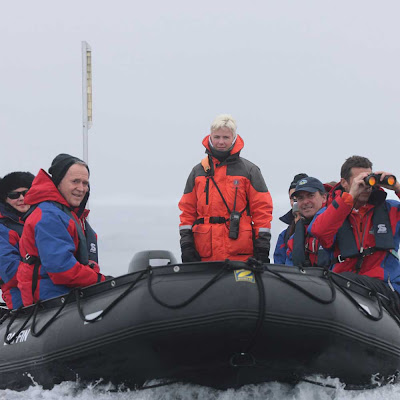Oceania Marina, due to launch next year, is one of
many exciting new ships on the horizon.
Photo courtesy of Oceania Cruises
Really?
Certainly, ships aren't being built at the rapid-fire pace they were five or six years ago. Almost every major cruise line expanded and revitalized their fleets significantly in the last decade, and multiple launches in a single year were not only common, the were de rigueur.
But then the economic recession came along and like everyone else, lines were forced to rethink their long-term newbuild programs. Many lines, like Norwegian Cruise Line, were just wrapping up aggressive newbuild campaigns. In NCL's case, the planned sister ships for Norwegian Epic were scrapped, leaving NCL's flagship to sail as a one-off design, something rare in the cruise industry.
Many reporters seem to point to one line's lack of newbuild activity after 2010 as the sign of trouble ahead. While it's true that Royal Caribbean currently has no newbuilds on its development slate, let's recap: Oasis of the Seas and the forthcoming Allure of the Seas cost the line an estimated $2.4 billion dollars - the rough equivalent of four Voyager-class ships.
That cruise lines are being cautious about over-extending themselves with a second round of aggressive newbuilding shouldn't be surprising to anyone - from a business perspective, it's the prudent and financially responsible thing to do. Another sector of the travel industry, over thirty years before, still serves as a stark reminder of what over-extending assets can do to a company.
When the Airline Deregulation Act was passed in 1978, Braniff Airways was then the fastest growing carrier in the United States. But there were problems: their new fleet of Boeing 747 jets were expensive to operate, and produced abysmal load factors. The planes basically cost Braniff money both in the air or on the ground. With deregulation in effect, airlines were for the first time forced to compete fiercely against each other for passengers - not unlike the recession we find ourselves in today.
Braniff's solution was to throw money at the problem, and they embarked on an aggressive program of expansion, both in terms of routes and aircraft. Trying to appeal to the jet-set crowd, Braniff entered into a complicated and costly agreement to operate the famous Concorde on so-called interchange flights with British Airways and Air France. Public response was tepid and the program was dropped after a year, but not before seriously damaging the company's already perilous financial situation.
In 1982, there was no more money to throw at the problem, and on May 12th, Braniff ceased all operations. Management had gambled everything on rapid expansion, and ultimately lost everything instead.
Cruise fanatics the globe over should be applauding their favorite lines for their cautious, wait-and-see approach. Carnival, in particular, has been very prudent, launching their Carnival Dream and Carnival Magic almost two years apart.
Other lines, like Holland America Line, have opted to build a smaller number of ships in recent years in favor of sweeping revitalization's to their existing fleet that, in effect, take an older ship and turn it into a brand new one. The line's continued Signature of Excellence program is one of the best and most ambitious in the industry, and serves as the template for other lines looking to experience the same success it has afforded them.
There's more reason for cruisers to rejoice: rather than building four or five cookie-cutter ships in as many years, limited financial resources could create that happy circumstance: one or two truly unique ships launched every other year certainly isn't unrealistic.
Is the "grand era of innovation" in ship design over?
Not a chance.
For a complete list of all the new ships on the horizon, head over to the excellent list of Future Ships as compiled by our friends at MaritimeMatters.







































